May 27, 2025 | 19:57 GMT +7
May 27, 2025 | 19:57 GMT +7
Hotline: 0913.378.918
May 27, 2025 | 19:57 GMT +7
Hotline: 0913.378.918
Investment in agriculture that utilizes cutting-edge technology in Gia Lai is seen as a necessary direction as the province opens its doors to welcome the series of investments, particularly in the agricultural sector. This also serves as an impetus for Gia Lai to encourage rural socio-economic development.
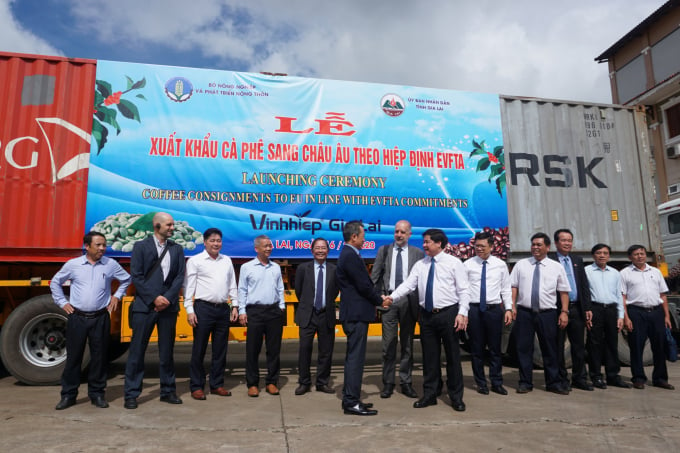
Vinh Hiep Gia Lai coffee was exported to Europe in June 2020. Photo: TDL.
Gia Lai is progressively adopting suitable agricultural paths, leveraging the island's climate and topography, in order to engage more fully in the local and international supply and demand chains. This province is very aggressive in pursuing its goal of promoting high-tech agriculture.
Gia Lai has established a number of specialized agricultural production zones with a strong emphasis on high-tech applications. According to a release from the province's Department of Agriculture and Rural Development, three local businesses have been recognized as high-tech agricultural enterprises.
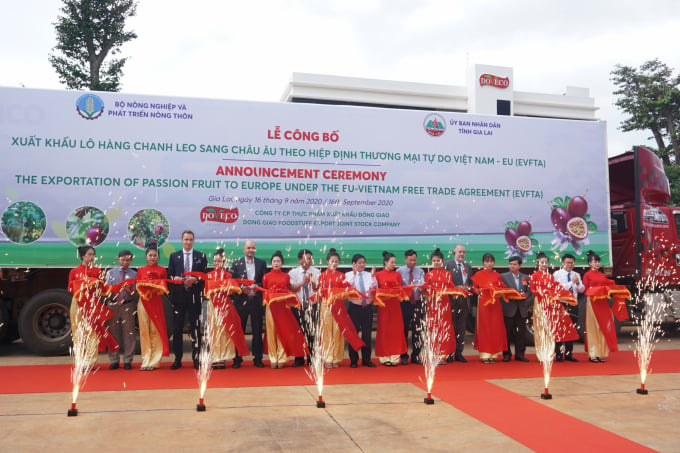
Doveco Gia Lai's passion fruit was exported to Europe in September 2020. Photo: TDL.
Agriculture-forestry-fishery output value will exceed VND 30,000 billion in 2020. The total value of agriculture and forestry exports reached USD 515 million, an increase of 14% over the previous year.
The aim is to grow the agriculture sector's worth to more than VND41 trillion by 2025, an average annual rise of 6%.
Currently, the province has 344 hectares of vegetables grown in accordance with VietGAP and GlobalGAP quality requirements, which are focused in three specialized vegetable-producing regions, namely Pleiku, An Khe Town, and Dak Po District. A number of Gia Lai's agricultural goods have been granted certified trademark registration.
Additionally, the province has been awarded planting area codes for 23 fruit tree types, and 186,885 hectares of plants are grown in accordance with VietGAP, GlobalGAP, 4C, Organic, and Rainforest Alliance standards (reaching 34 percent of the provincial planted area).
Gia Lai has been aggressively attracting high-tech businesses, establishing a high-tech application industry in the An Phu field area of Pleiku and Dak Doa districts until 2025, with a vision toward 2035; establishing a hi-tech agricultural zone in Chu Se district; and attracting numerous large enterprises to invest in the province's 15 hi-tech agricultural projects.
Additionally, the Gia Lai project is developing over 120,000 hectares of vegetables and fruits and over 25,000 hectares of medicinal plants. Currently, the province of Gia Lai contains 231,000 hectares of association plants.
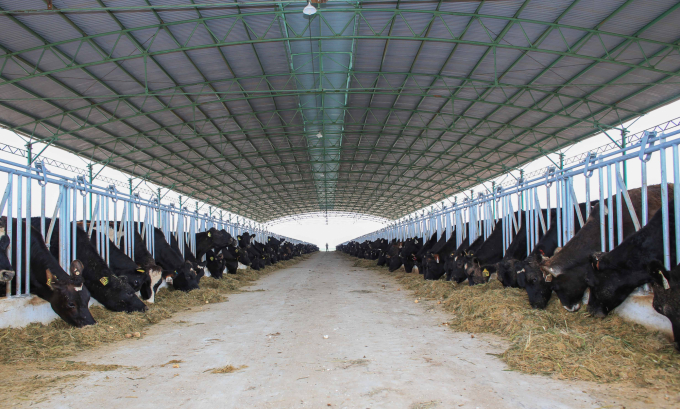
Cow raising project of Hoang Anh Gia Lai Group. Photo: Tuan Anh.
Simultaneously with its efforts to attract investment, Gia Lai is establishing traceability; branding for the province's agricultural and forestry goods. As soon as the EVFTA took effect, two of Gia Lai's primary exports, coffee and passion fruit, were shipped to Europe.
Certain companies that invest in rooftop solar also use high-tech agricultural farm concepts. When development is undertaken with commitment and science and technology are used to agricultural production, there is significant potential to increase the value and quality of agricultural goods produced in the region.
Vo Ngoc Thanh, Chairman of the Gia Lai Provincial People's Committee, highlighted that organic agriculture is critical not only for producer and consumer health but also for environmental improvement and protection, as well as agriculture's sustainable growth.
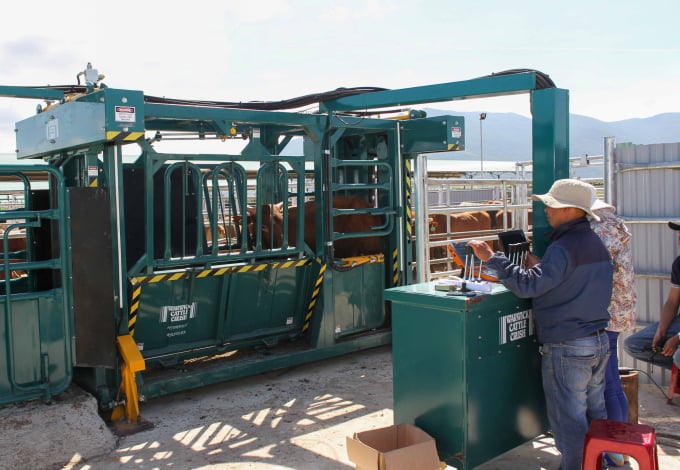
Hoang Anh Gia Lao applied high-tech in cow farming. Photo: TDL.
Additionally, it is a strategic plan for agricultural development in the direction of high technology, automated and intelligent technology, to increase added value, and to create and expand large-scale fruit and animal producing regions with high economic value.
In early 2021, two Vietnamese "giants," billionaires Tran Ba Duong and Doan Nguyen Duc, provided possibilities for Gia Lai in attracting investment, thus contributing to the growth of Vietnam's economy. This province is more prominently shown on the map of Vietnam's high-tech agriculture growth.
Thus, two major HAGL Agrico projects have been underway in Gia Lai since the beginning of 2021, bringing great expectations for the agricultural industry in Gia Lai, including the project of farming cows for meat in IaPuch commune, Chu Prong district, with a total investment of approximately VND 1,993 billion; and the project of raising pigs for meat in combination with the care and development of rubber trees in Po To commune.
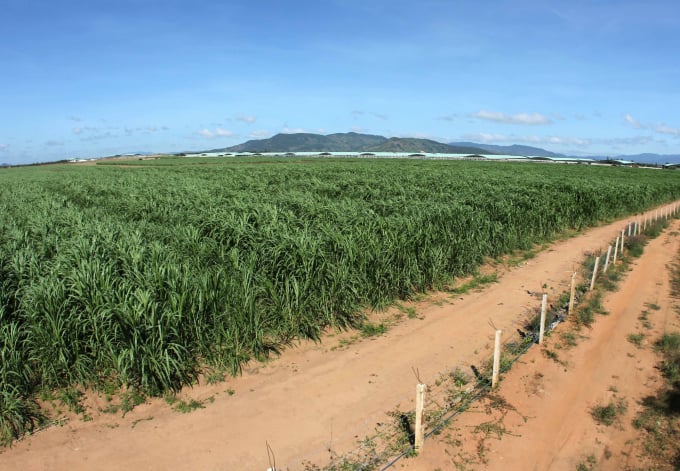
The grassland of Hoang Anh Gia Lai is used for cattle raising. Photo: Tuan Anh.
To realize this vision, Gia Lai agriculture is moving in the direction of organic farming, technology investment, and value chain integration. This is a chance to establish Gia Lai as Vietnam's center of high-tech agriculture, while also developing and improving processing technologies.
Gia Lai is gradually transitioning from small-scale and scattered livestock production to a concentrated, industrial-scale model via the use of advanced technologies, the organization of dual production in a connected chain, and the establishment of a disease-free livestock area. Attracting big companies to engage in the livestock industry via 106 high-tech livestock projects totaling more than VND 15,000 billion in investment capital.
Translated by Linh Linh
/2025/05/26/1716-4-nongnghiep-191706.jpg)
(VAN) Chain linkages, technological innovation, and raw material zoning are three strategic pillars for the coconut industry to strongly develop and elevate its position on the global agricultural map.
![Advanced mariculture – an inevitable trend: [4] Accompanied by scientists](https://t.ex-cdn.com/nongnghiepmoitruong.vn/608w/files/sohk/2025/05/13/1941-pgsts-vo-van-nha-140958_717.jpg)
(VAN) According to Assoc. Prof. Dr. Vo Van Nha, Director of the RIA III, the development of advanced offshore mariculture is no longer an option but an essential path for Vietnam’s fisheries sector.
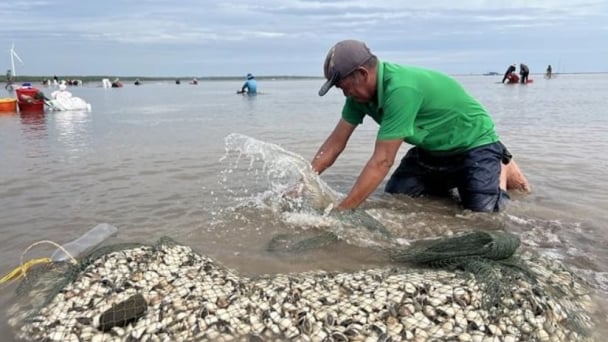
(VAN) Vietnam is intensifying the development of mollusk farming areas that meet international standards, aiming for sustainable growth and enhancing its export position in the global seafood market.
![Advanced mariculture – an inevitable trend: [3] Policy-driven momentum](https://t.ex-cdn.com/nongnghiepmoitruong.vn/608w/files/doanhtq/2025/05/21/0104-0616-0348-nuoi-bien-170339_789.jpg)
(VAN) To ensure the success of offshore mariculture that uses advanced technologies, it is essential to establish supportive policies that inspire both individuals and enterprises to invest with confidence.
![Advanced mariculture – an inevitable trend: [2] Outstanding results](https://t.ex-cdn.com/nongnghiepmoitruong.vn/608w/files/sohk/2025/05/12/4632-4136-nuoi-bien-11-164117_819.jpg)
(VAN) Pilot models of high-tech offshore mariculture in Vietnam, particularly in the South Central Coast region, have demonstrated exceptional economic returns and sustainability, setting a new direction for the country’s aquaculture industry.
![Advanced mariculture – an inevitable trend: [1] Moving offshore](https://t.ex-cdn.com/nongnghiepmoitruong.vn/608w/files/phucpm/2025/05/18/0252-2436-nuoi-bien-6-162148_783.jpg)
(VAN) Mariculture using advanced technology and moving offshore is an inevitable trend, as nearshore areas increasingly reveal limitations.
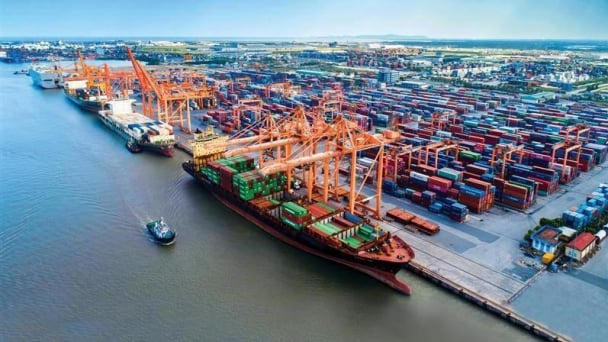
(VAN) South Korea is currently the second-largest investor in Hai Phong in terms of the number of projects (186 projects) and the largest in terms of total registered investment capital, reaching USD 14.2 billion.